It’s that time of year when we run out of all the fresh flowers in our garden and turn to those we dried or preserved for the long winter season. To see my post on the revival of dried flowers that were very popular in the 70’s and 80’s, go to Dried Flowers from the Dead.
And what better time to use them than at Christmas with the fresh and vibrant colors of the season?
Most types of fresh flowers can be dried, either air-dried or with silica gel (a preservative powder that comes in small packets). Easy to make, but with my busy flower growing season, I wasn’t able to make as many as I would like.
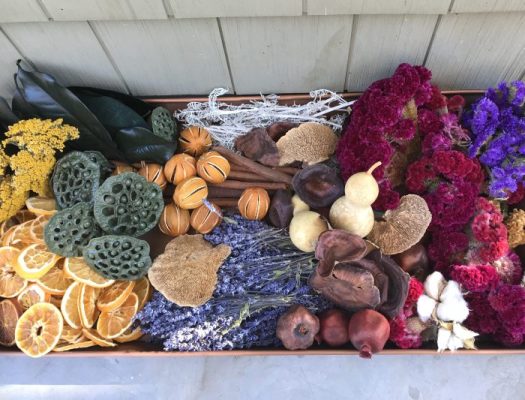
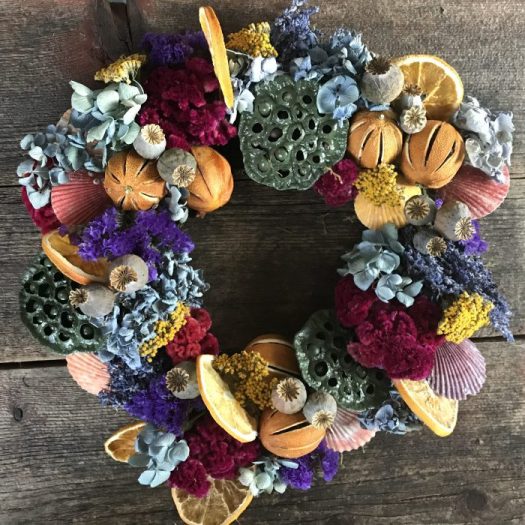
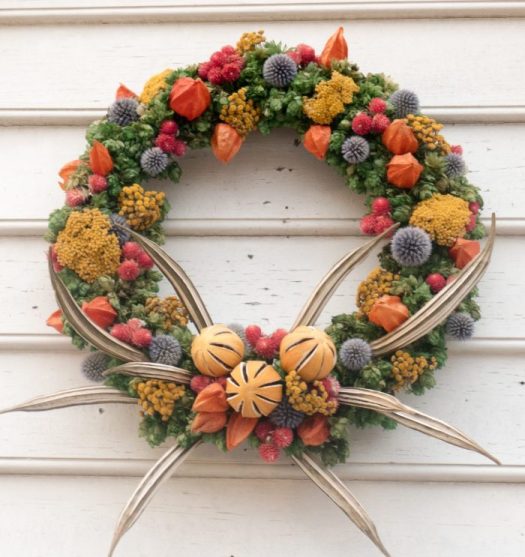
Winterthur dried flower tree
The ultimate dried flower creation of the holiday season is the Winterthur Dried Flower Tree in Wilmington, Delaware, which is created annually from dried flowers. Starting with the flowering of the daffodils in spring, the gardeners dry everything that grows or is used in the mansion throughout the year. A combination of air drying and silica gel is used to capture the vibrant colors used on the tree.
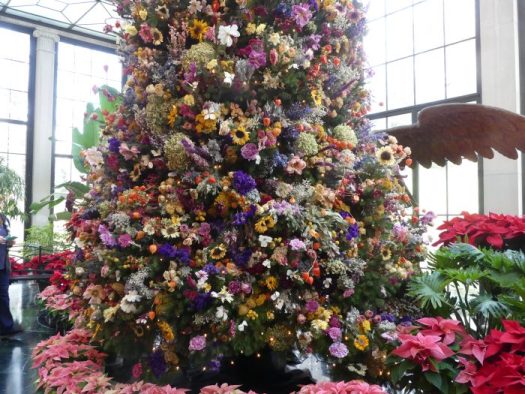
An impressive exhibition held every year, The dried flower equipment, composed of floral designers and some of the gardening guides, dries flowers using two methods. Flowers that can be dried outdoors, such as delphinium, yarrow, allium, safflower, and statice, are grouped in small clusters. Those are the ones you see immediately when you enter the Drying room. Other delicate flowers such as peonies or roses are dried in powdered silica gel.
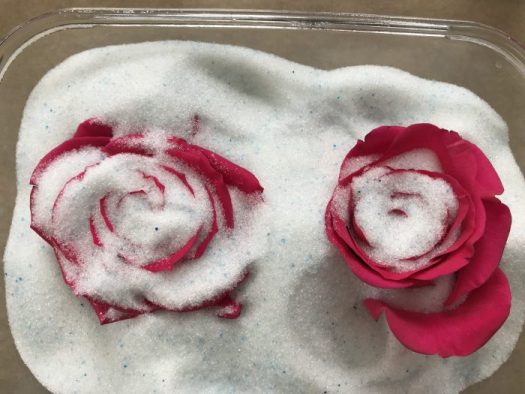

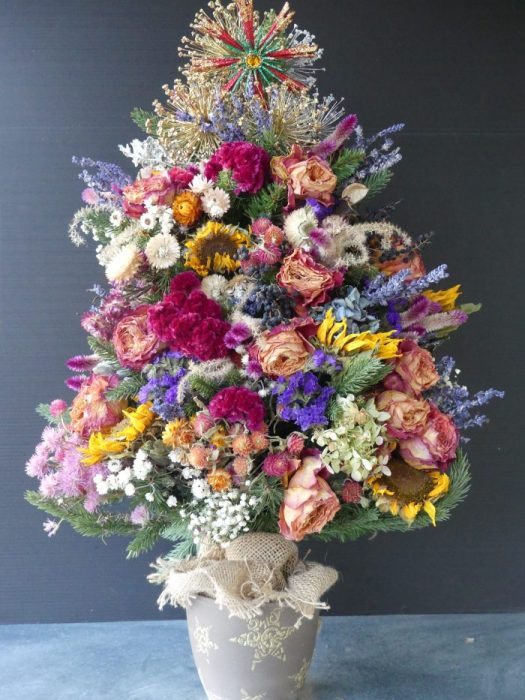
Meredith Graves, head of the floral arranging team at Winterthur describes in this great video how it all comes together. Each flower is placed in a fumigation tent for 3 weeks to ensure no unwanted bugs or diseases attach to the flowers. The tree itself can be a new specimen or a fake tree, depending on availability, and is decorated with the help of a team of volunteers.
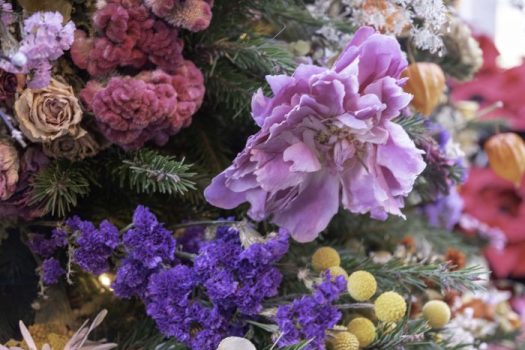

Cotehele Dried Flower Garland – UK
The other featured dried flower creation is created every November across the pond in Cotehele. I was there in person this spring and saw the huge space they have to work with. You really need a big setup to look good and the garland is huge!
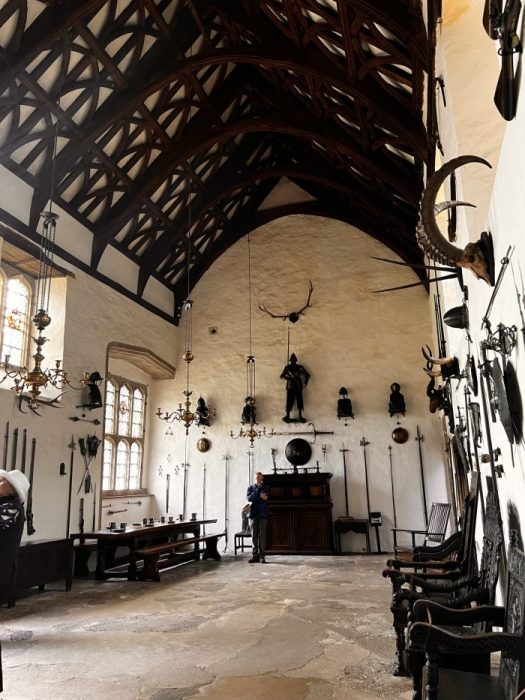
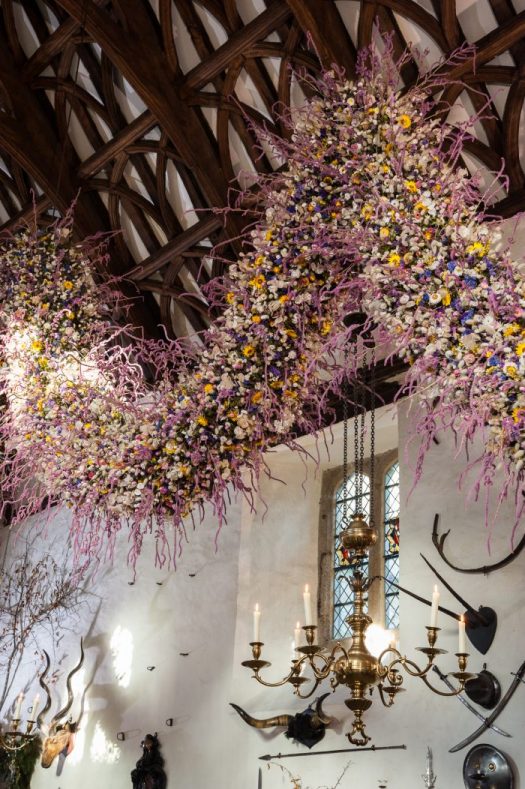
Cotehele, a National Trust Tudor house with medieval roots in Cornwall, started the tradition in 1956 and continues to this day. Look at this video in the famous 60′ long dried flower garland that is made every Christmas and hung for the holidays. One of the oldest and best preserved Tudor houses in England today, it is a property that has been on my ‘want to visit’ list for a long time and I hope to visit next year. For the following photographs, I used photographs by Carole Drake, garden photographer and writer, who was kind enough to give me permission to use them.
The different flower varieties vary from year to year, but white always predominates.
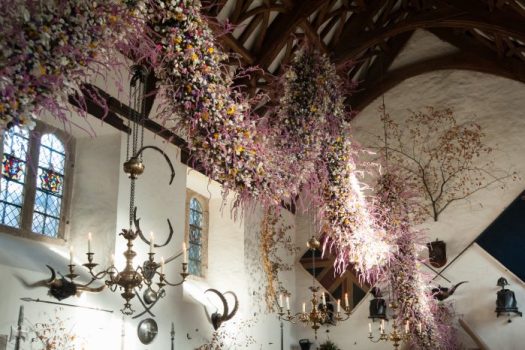
The base of the garland is constructed with fresh green pittosporum tied in dense clusters that can take 3 people per week to create. Cutting and drying the flowers continues until the end of September.
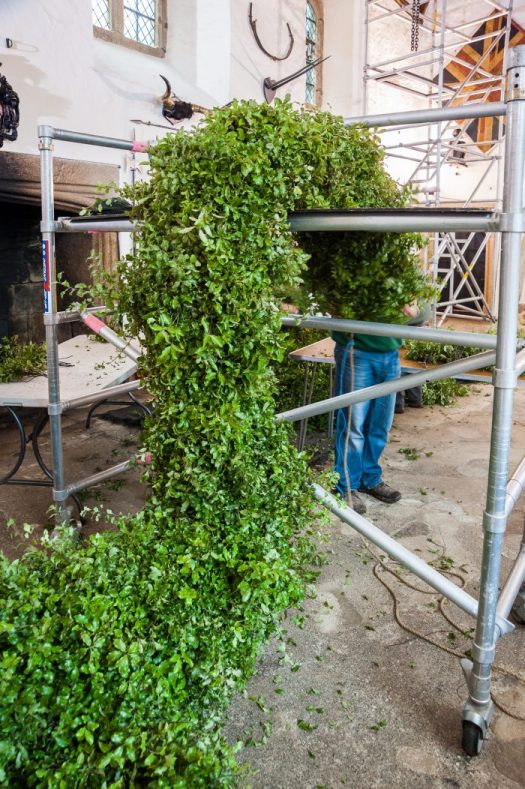
Once completely dried, the flowers are threaded, one stem at a time, into the dense greenery that holds the stems in place. Up to 35,000 stems are needed to make the 60-foot garland and the work is done over a two-week period by hardworking volunteers and staff who work all day, every day. Once a masterpiece is completed, it takes a community to grow, design and hang the giant garland – a magical achievement!


Flowers to dry
eternal daisy
acroclinium ‘Double mix’
Tall stems and classic yellow center daisies.
Static
limonium sinuatum
A semi-hardy, easy-to-grow annual. Sow directly into borders in warmer climates. Blue, yellow, white, purple and pink and easy to grow.
Eternal Pierrot
A pink helicopter ‘Pierrot’
Paper white flowers with striking black centers. Sow indoors and plant outdoors in May.
Hare’s Tail Grass
Lagurus ovatus
Semi-hardy annual herb with soft, fluffy ‘tails’. It can be resistant in temperate areas.
straw flower
Helichrysum bracteatum
Probably the best everlasting flower of all, with paper-bright petals. Comes in a wide range of colors.
Pink pokers
Limonium suworowii
Another type of statice with long, pink flowers shaped like pipe cleaners. Low maintenance plant that does well in gardens by the sea. Plus, easy to grow.

How to dry flowers
Dried flowers can look stunning in arrangements and last much longer than fresh flowers.
1. Pick the flowers when they are dry, making sure the sun is out and the flowers are fully open.
2. Remove all leaves so they do not retain moisture.
3. Hang the flowers in clusters of 20 upside down, widely spaced, in a warm location. dark place.
4. It is important to dry them in the dark as this will ensure that they maintain their color.
5. The drying process normally takes about two weeks. The flowers usually last 12 months.



